Here are two static electricity science experiments that kids will love! Build an electroscope, and use balloons to show how static electricity causes forces of attraction and repulsion. Parents and teachers will love the fact that these experiments make use of simple materials from around the house. Both of these experiments are fun and provide a good “wow factor!”
Balloons are one of the best materials for creating a static charge. Everyone knows that rubbing a balloon on your hair or clothes will create some static! In these two experiments, we’re going to harness the static that a balloon can create and observe the effects of the of charges.
Before we get started, I should point out that these are actually science demonstrations and not true experiments. A demonstration shows kids how a science concept works in a hands-on way, while a true experiment tests one or more variables and compares them to a constant. We’re not testing anything here, but kids will be learning a lot through these science projects!
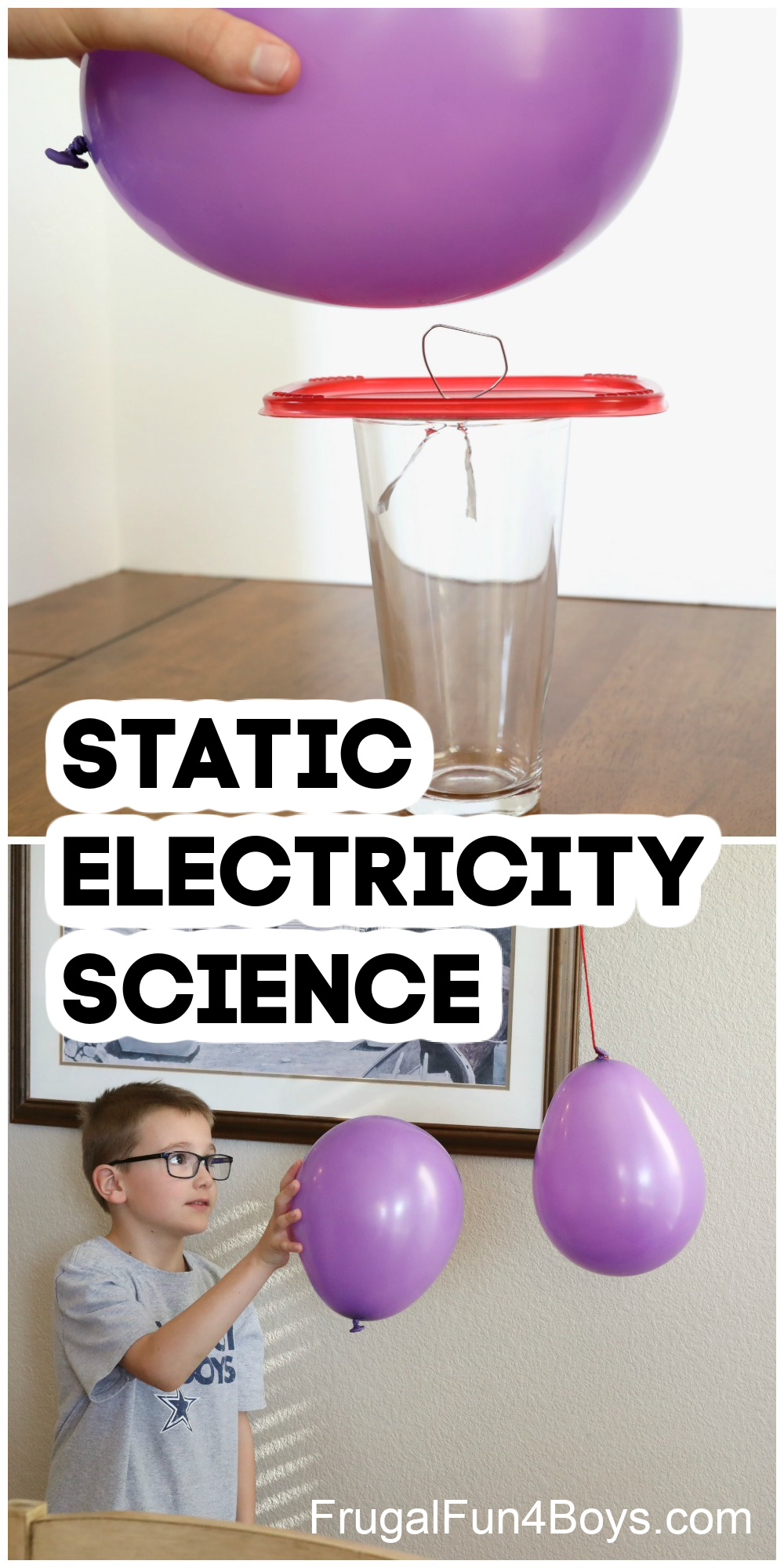
Experiment #1: Pushing Balloons
Use a balloon too make another balloon move – without even touching it! This experiment demonstrates the forces of attraction and repulsion that electrical charges create.
First, blow up two balloons. Tie yarn to one of the balloons, and hang it from the ceiling so that it sits an your child’s eye level.
Next, grab the hanging balloon, and rub it in your hair.
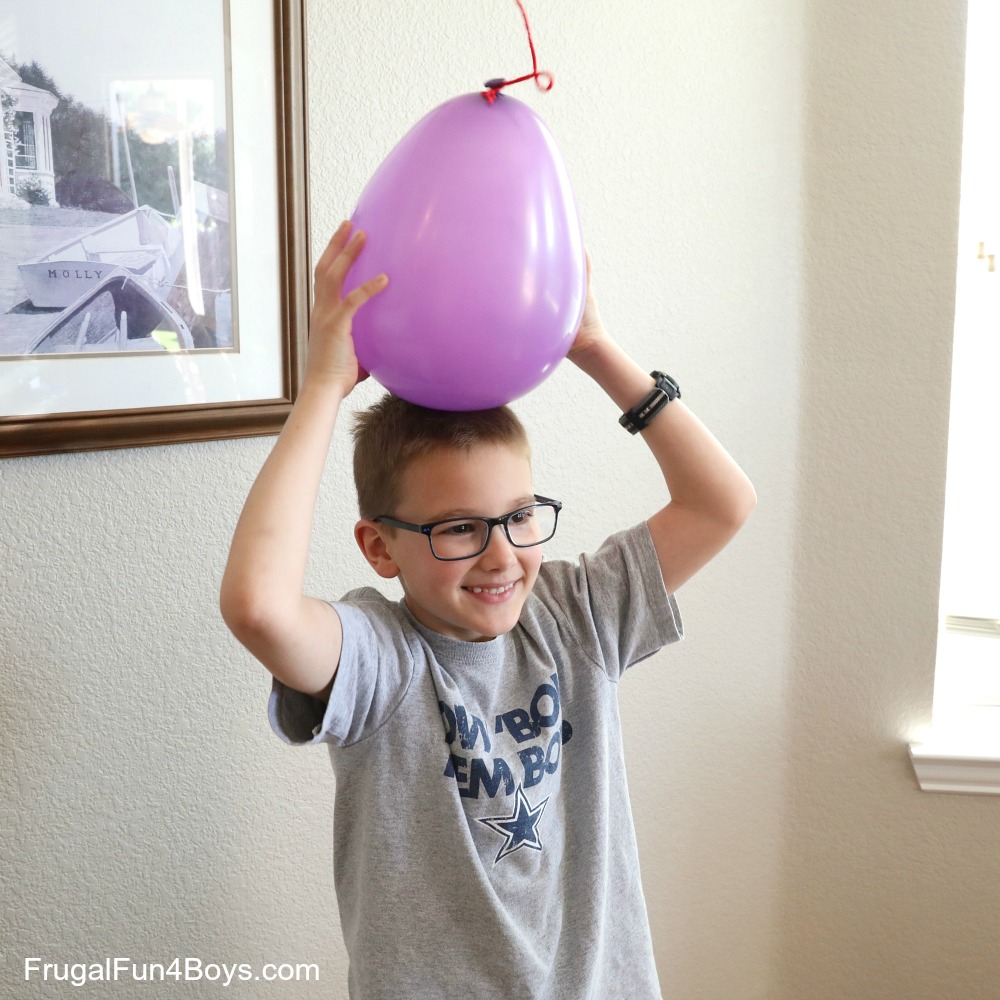
Then rub the other balloon in your hair. Both balloons have now picked up electrons from your hair, and so they now both have a negative charge.
Opposite charges attract, but like charges repel each other.

Hold the balloon so that it’s close to the hanging balloon. It should push the hanging balloon away! Don’t let the balloons touch each other – just hold the second balloon close to the first one and see what effect they have on each other.
This experiment works the best on a dry day, but we tried it on a hot and humid day, and it worked just fine! However, we got even more dramatic results when we did this in the winter. So it will work in humidity, but go for a dry day if you can.
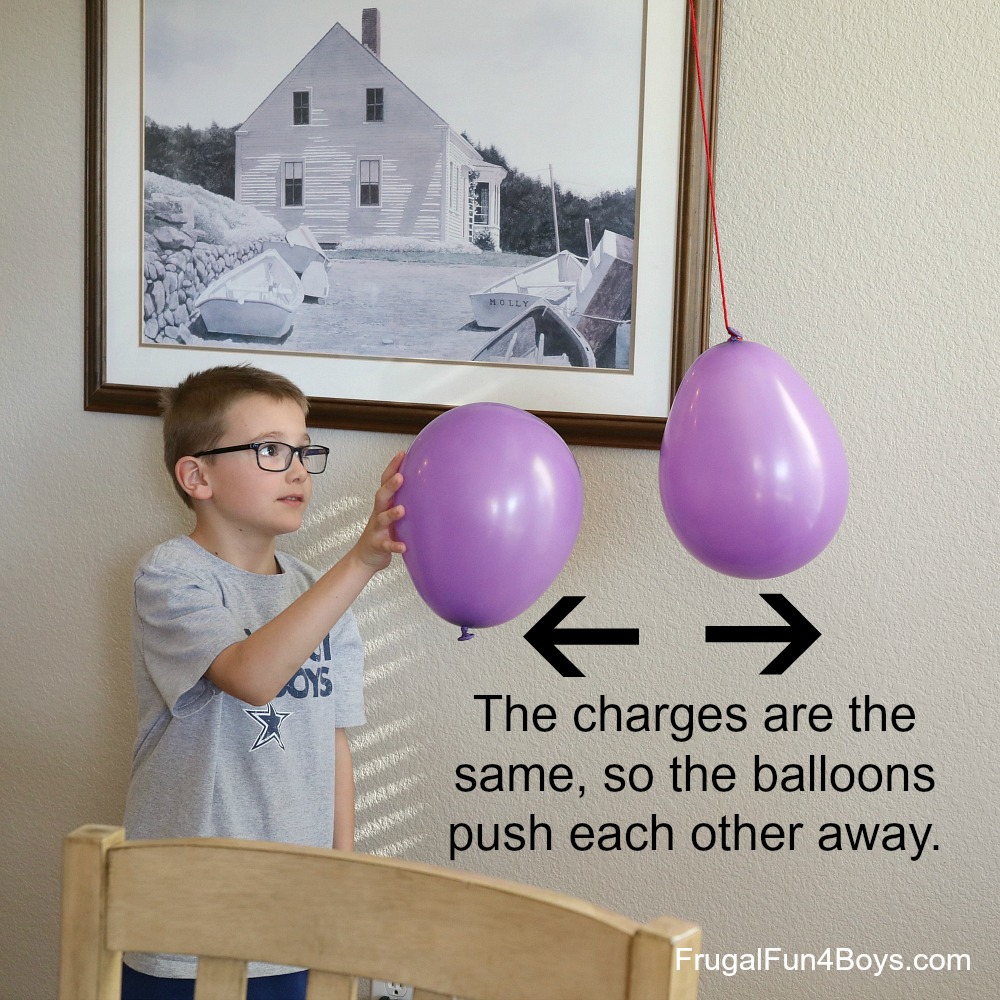
Now try charging just ONE of the balloons. We found that we could “get rid of” the charges by touching the balloons and letting them touch each other. This allows electrons to move between objects and even out.
Now, rub just one of the balloons in your hair and repeat the experiment. What happens? This time, the charges should be opposite – one balloon is negatively charged (the one you rubbed on your hair), and the other is positively charged or not charged at all (neutral). The balloons should now attract each other!
Experiment #2: Build an Electroscope
An electroscope is a device that detects electrical charges. You can make one using items from around the house!
Here’s what you’ll need:
- A glass or a glass jar (we started with a jar but switched to a glass so that you could see the experiment better in the photos)
- Foil
- A paper clip
- A plastic lid – something that you don’t mind making a hole in
- Scissors
- Ruler
- Pliers – to bend the paper clip
- A balloon
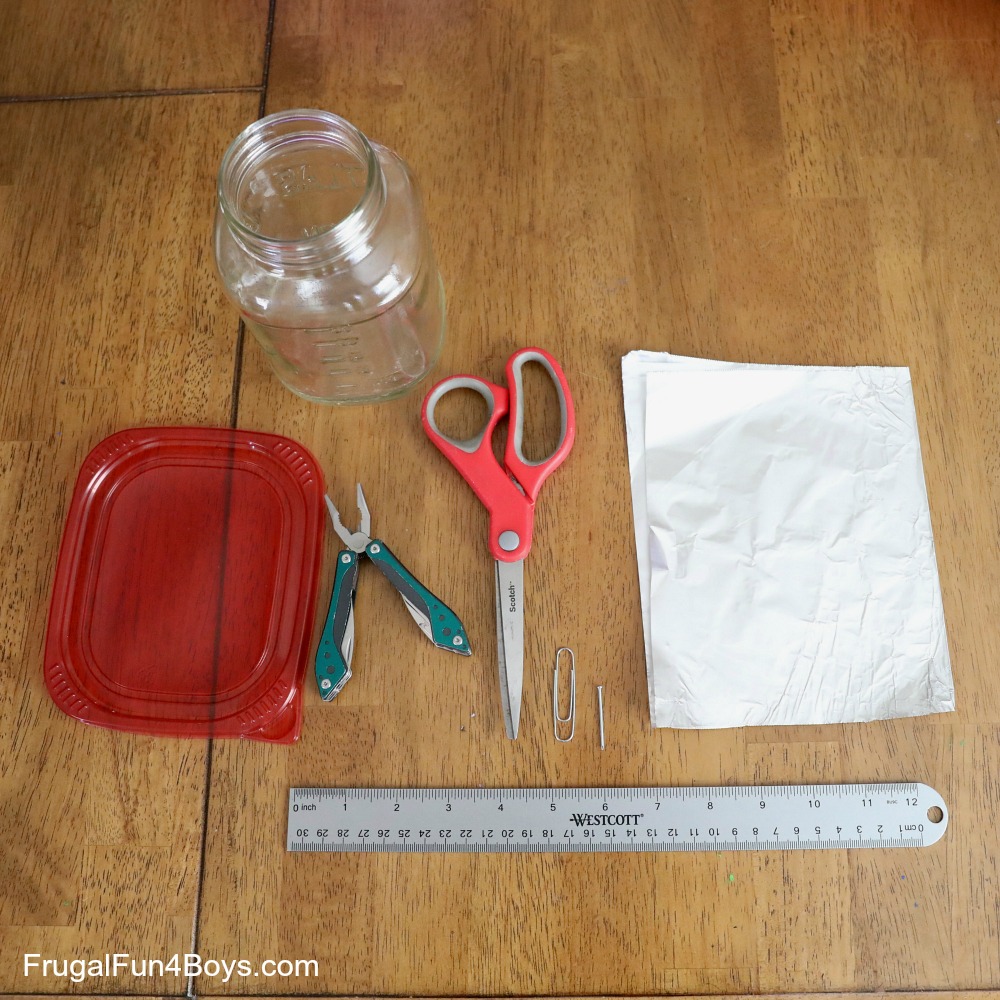
To make your electroscope, start by bending the paper clip as shown.
Cut two strips of foil that are about 5 cm x 1.5 cm.
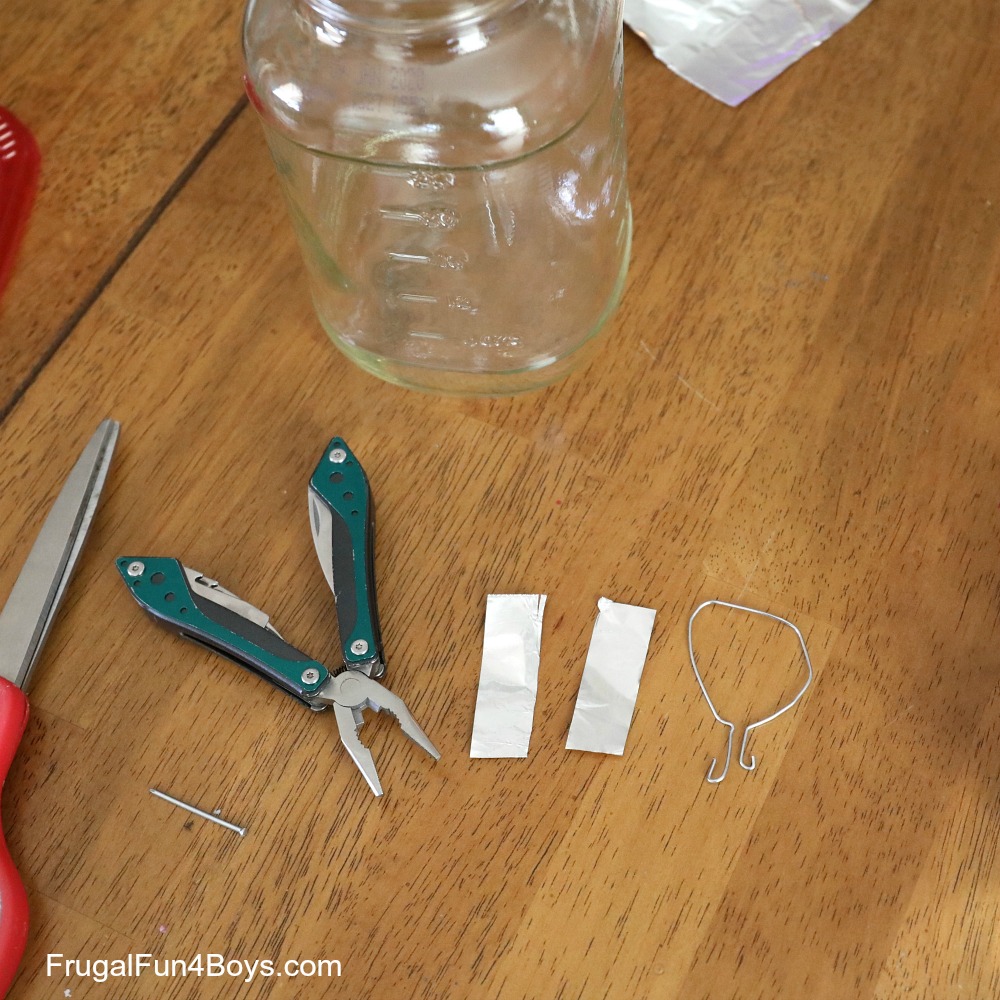
You’ll need a way to hold the paper clip in place. We used scissors to cut a small slit in a disposable plastic lid. We tried a nail first, but it didn’t work very well.
Slide the paper clip into the slit. Then hang one piece of foil on each end of the paper clip by making a little hole in the foil.

Now it’s time to test your electroscope! Blow up a balloon and tie it off. Rub it in your hair, and then hold it close to your electroscope.
What happens?
The pieces of foil move away from each other. If you take the balloon away, they’ll drop down again like normal. Bring the charged balloon close, and they move outward again.
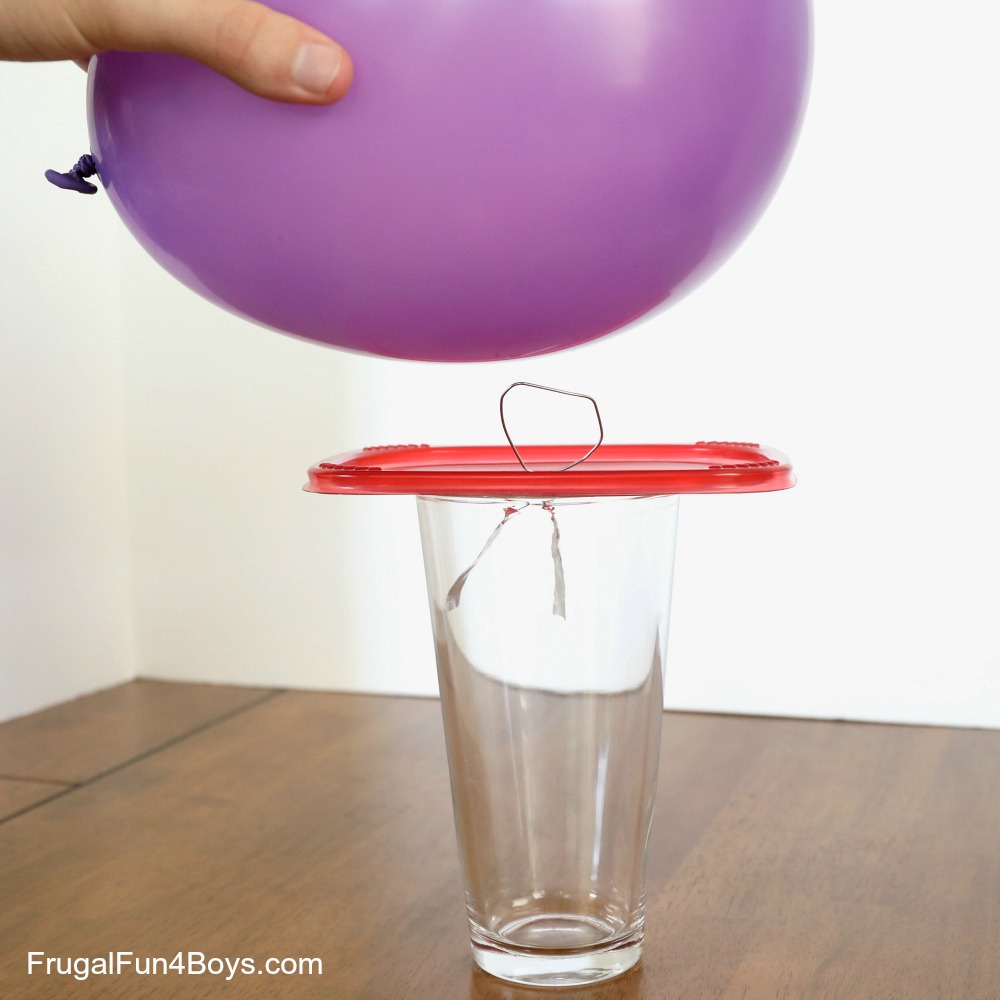
Once you’ve tried this out, try touching the charged balloon to the paper clip. The foil strips should move away from each other, and then stay that way.
Why does this work?
The paper clip and the foil are neutral because they have an equal amount of positive and negative charges. The balloon has a negative charge as a result of picking up extra electrons from your hair. When you bring the negatively charged balloon near the electroscope, the negative charges in the foil respond. Because like charges repel each other, the negative charges in the foil traveled down to the ends of the foil, away from the balloon. The ends of the foil then became negatively charged, and repelled each other, causing the strips of foil to move away from each other.
When you touch the balloon to the paper clip, however, the negative charges were able to move to the paper clip and then to the foil strips, giving them a negative charge that lasts even when you move the balloon away.
Need more simple science experiment ideas? We’ve got lots!
Here are 10 Awesome Electricity Science Projects – experiments with both static and current electricity.
Lift water with your own DIY Archimedes screw. Kids will be very impressed with this!
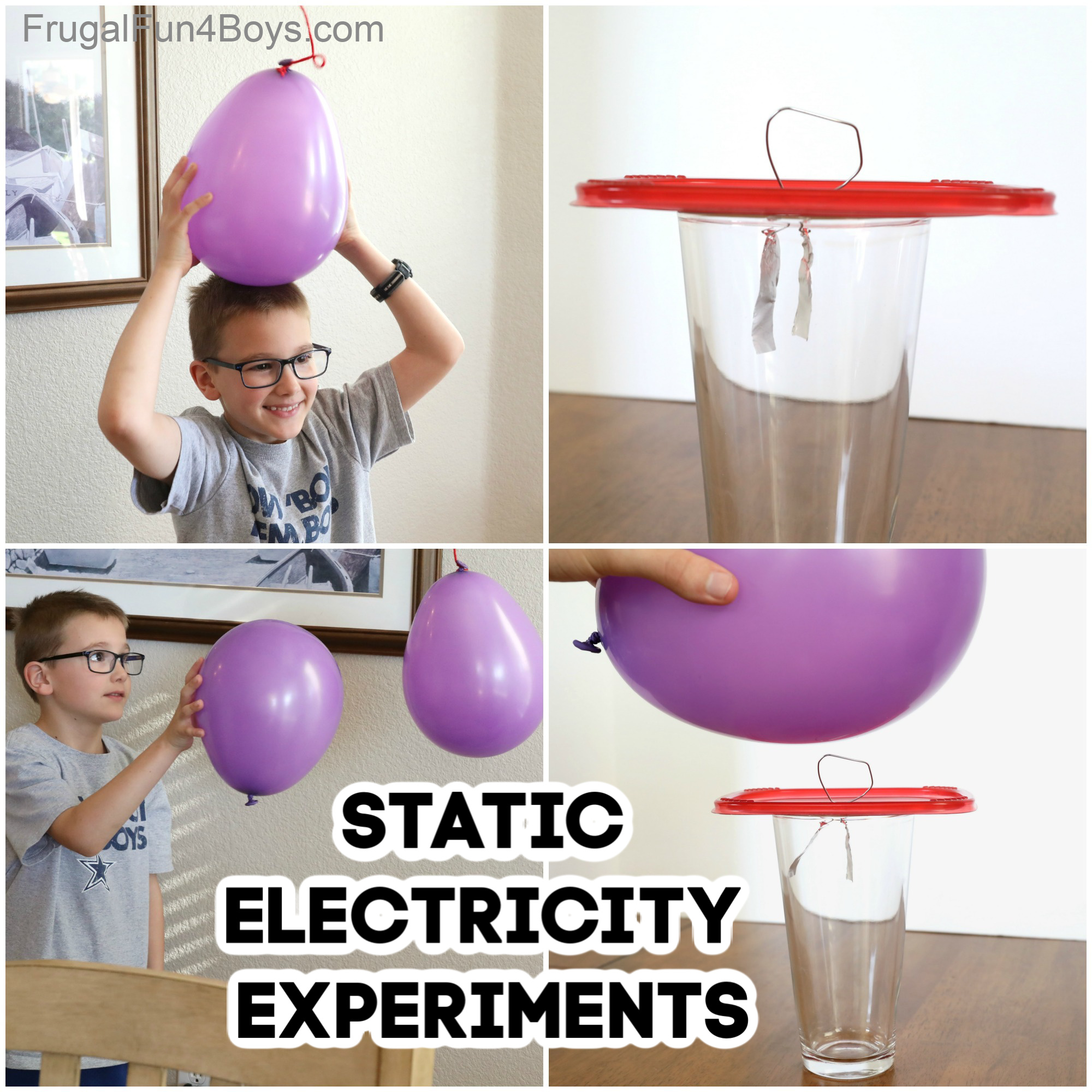

1 Comments
Cheri Jan 24, 2024
Wish there were a view of the lid looking down on it. Do both ends of the paperclip go in the same slit?
Sarah Jan 29, 2024
Yes - same slit for both
Post a Comment